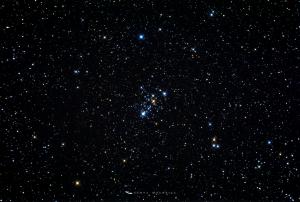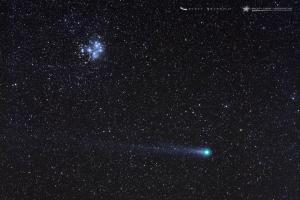
Stargazing Nights - Closed
- Where:
- Frosty Drew Observatory
- When:
- Friday November 9, 2018 - CLOSED
- Cost:
- $5 Suggested Donation per person 5 years and older
Tonight is Stargazing Night at Frosty Drew Observatory, and for the second week in a row, we can expect horrendous weather for stargazing. Tonight’s forecast is calling, again, for heavy rain, t-storms, high winds, and full cloud cover; just in time for our weekly astro geek out, and sadly on a night with practically no Moon due to the 7% waxing crescent setting at 6:10 p.m. Due to the dismal forecast, Frosty Drew Observatory will remain closed tonight and will return to our regular Stargazing Nights event schedule on Friday, November 16, 2018 starting at 6:00 p.m. Clouds begone!
----------------------
Weekly Happenings
Scott MacNeill
Though tonight’s forecast is a weather bomb, Saturday night looks fabulous, and second chances rock. Take a night out in Providence, Rhode Island for the last waterfire event of the year. Lights in the Dark’s Jason Major, Brown University’s Ian Dell’Antonio, and Frosty Drew Observatory’s Scott MacNeill will setup telescopes along River Walk in between Market Square and College Street from 5:00 p.m. - 11:00 p.m. Mars will be on display as well as a handful of binary/double stars. So bundle up, grab a tasty treat and sit along the three rivers of Providence, Rhode Island and enjoy fabulous music, blazing braziers, and fire dancers as the holiday season starts to ramp up.
Overnight last Saturday night / Sunday morning, November 3-4, 2018, the skies over Frosty Drew Observatory cleared out, leaving a fabulous starscape to celebrate. At the observatory, I setup the camera and sat under the stars while capturing fabulous images of the cosmos. On the list was the Open Star Cluster, Messier 103 (M103). Found in the constellation Cassiopeia, M103 resides at around 9,000 light years distant. The cluster is comprised of 172 confirmed member stars, making it a rather small open cluster. The stars of the cluster span a region of space about 17.5 light years in diameter. Most of the stars in the cluster are hot blue stars, with a red giant star residing at the cluster center. Estimated age of the cluster is about 25 million years old, which is about 25% the estimated age the Pleiades Open Cluster. Check out the image of M103 that I captured that night at Frosty Drew Observatory. I captured other images that night as well and will post about them in the near future. So here’s to beautiful nights spent under thousands of stars!
During the winter holiday months and those that follow, we often score with a brighter than average comet in the Northern Hemisphere night sky. Though not usually naked eye visible, most of these comets of late have been easily visible in binoculars. The winter of 2017-2018 did not bring such a comet, and left Northern Hemisphere comet watchers in a state of complaint. Well skip ahead to now, and it appears that the winter holiday comet trend will start up again with the coming of Comet 46P/Wirtanen (46P). Comet 46P is a periodic comet, which means it has a less-than-200 year orbit around the Sun, with a period of only 5.4 years. The comet has a wide perihelion (closest point to the Sun in its orbit) at a distance of 1.06 AU (Astronomical Unit, 1 AU = distance of Earth from the Sun), and a rather eccentric orbit with an aphelion (closest point from the Sun in its orbit) at 5.1 AU. The orbit of 46P is occasionally modified by Jupiter’s immense gravitational influence, which happened in 1972 and 1984. On December 13, 2018, Comet 46P will achieve perihelion, followed by a close pass with Earth on December 16, 2018 at a distance of 7.26 million miles (about 28 times the distance of the Moon). The December 16th pass is quite notable in that it will be the closest pass of Comet 46P to Earth since its discovery in 1948. In fact, this will be the 20th closest comet to pass Earth since record keeping of comets began! Though that doesn’t mean it will be the brightest pass. Regardless, we are setup for a potentially naked eye visible comet this holiday season. As we move through November we will keep a close eye on Comet 46P, and if the comet brightens as expected, we will publish periodic viewing charts, as well as introduce special events at Frosty Drew Observatory to view the comet. So gear up for what could be a fabulous holiday comet this coming month and call in the holidays with a cosmic gift, compliments of Solar System formation.
-Scott



